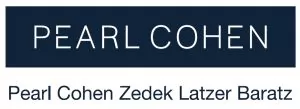Congress earmarks an additional $284 billion for the Paycheck Protection Program
On December 27, 2020, the President signed into law a new stimulus package, the Consolidated Appropriations Act, 2021 (the "Act"), which reinstated the Paycheck Protection Program (the "PPP") following its expiration in August 2020 and introduced several material changes to the program. The PPP was initially created in March 2020 as part of the Coronavirus Aid, Relief, and Economic Security Act (the "CARES Act") in order to support businesses and employees affected by COVID-19.
Congress initially allocated $349 billion in funding to the PPP and subsequently funded the program with an additional $320 billion. As part of the new stimulus package, Congress agreed to reinstate the expired PPP and appropriate an additional $284 billion for the program.1
Under the Act, Congress has revised the PPP in several ways: (a) the Act expands the list of eligible forgivable expenses; (b) ensures tax deductibility for expenses paid with forgiven PPP loans; (c) provides targeted funding for some of the nation's hardest hit industries; (d) makes certain not-for-profit organizations eligible for loans; and (e) offers businesses facing revenue reductions the opportunity to apply for a second loan.2
Similar to the previous version of the PPP, which stopped accepting applications in August, the latest version includes federal funds in the form of forgivable loans to small businesses.3 PPP loans will be available to first-time eligible applicants and to businesses that previously received a PPP loan.4 However, the Act includes key changes on issues such as eligibility for second-time applicants and types of forgivable expenses.5
First-Time Applicant Eligibility
First-time PPP applicants remain subject to the PPP's original eligibility rules and may apply if an applicant is part of any of the following groups:
- Businesses with 500 or fewer employees that are eligible for other SBA 7(a) loans;
- Sole proprietors, independent contractors, and self-employed persons;
- Any business with a NAICS Code that begins with 72 (Accommodations and Food Services) that has more than one physical location and employs less than 500 per location;
- Any business, 501(c)(3) non-profit
organization, 501(c)(19) veterans' organization, or Tribal
business concern (sec. 31(b)(2)(C) of the Small Business Act) with
the greater of:
- 500 employees, or
- That meets the SBA industry size standard if more than 500.6
Similar to the previous PPP rounds, loan amount eligibility for first-time applicants will be based on an applicant's payroll.7
Second-Time Applicants
Second-time applicants are subject to more restrictive requirements, as Congress intended to target funding for businesses in industries that have been hit the hardest by the pandemic.8 In order to qualify as an eligible borrower, a prospective second-time PPP applicant must:
- Employ 300 or fewer employees; and
- Demonstrate at least a 25% reduction in gross receipts during any quarter in 2020 compared with the same quarter in 2019.9
The maximum loan amount for second-time applicants under this latest PPP round is $2 million, a significantly lower amount than the $10 million cap that businesses were eligible to apply for under the previous two PPP rounds.10
The Act allows applicants that returned all or part of a previous PPP loan to reapply for the maximum amount available to them.11 Second-time PPP applicants are generally eligible to borrow an amount equal to two and a half times their average monthly payroll costs.12 However, applicants in the accommodation and food services industries are eligible for loans that amount to three and a half times their average monthly payroll as the SBA recognizes that these industries have been significantly affected by the pandemic.13
Loan Forgiveness Requirements
Borrowers are required to spend at least 60% of the loan on eligible payroll costs over a covered period of either 8 or 24 weeks in order to be eligible for full loan forgiveness.14 In addition, 40% of the loan may be used on other eligible costs such as payments on business mortgage interest payments, rent, or utilities over the borrower's covered period.15 The Act expands the list of forgivable expenses to include the following:
- Worker protection and facility modification expenditures, including personal protective and other equipment, needed to help borrower comply with COVID-19 federal health and safety guidelines during the period between March 1, 2020, and the date on which COVID-19 no longer qualifies for federal emergency status;
- Supplier costs, including expenditures pursuant to a contract for goods in effect prior to the PPP loan covered period and that are essential to the current operations of the entity when made;
- Operating costs such as payment for software, cloud computing services, and other human resources and accounting needs; and
- Covered property damage costs, such as property damage and vandalism or looting due to public disturbances during 2020 not covered by insurance.16
Additional Changes of Certification Requirements
The Act eliminates the CARES Act requirement that, as part of the application process, PPP applicants certify "that the uncertainty of current economic conditions makes necessary the loan request to support the ongoing operations of the eligible recipient" and that the PPP "funds will be used to retain workers and maintain payroll or make mortgage payments, lease payments, and utility payments."17
In addition, the Act allows applicants for loans less than $150,000 to expedite the forgiveness process by completing a one-page certification attesting to the 25% revenue loss during a specific quarter in 2020 required for loan eligibility.18 However, such applicants would still be required to substantiate the 25% revenue loss on or before submitting a forgiveness application.19
Tax-Related Changes
The Act also includes a number of tax-related changes, including extending the availability of the retention tax credit through June 30, 2021 and amending the employee retention credit to be equal to 70% of qualified wages paid to employees after December 31, 2020 and before July 1, 2021.20 Further, the Act sets the maximum tax credit that can be claimed by an employer in 2021 to $7,000 per employee per calendar quarter.21
In addition, the Act allows employers to deduct expenses paid with forgiven loan proceeds - increasing the value of the forgiven PPP loans to employers.22
Full Deduction for Business Meals
The Act allows a 100% deduction for food and beverage expenses, provided by a restaurant, between January 1, 2020, and December 31, 2022.23
Extension of Deferred Payroll Taxes
The Act extends the deadline for employees to repay the employee share of Social Security taxes on certain wages until December 31, 2021.24
Ineligible Entities
Ineligible entities include entities with certain relationships to the People's Republic of China or the Special Administrative Region of Hong Kong, including those created, organized or having significant operations in these areas or having directors who are residents of the People's Republic of China.25
How to Apply
The Act requires the SBA to establish updated PPP guidelines no later than 10 days after the legislation is signed into law.26 PPP loans are issued by all SBA §7(a) lending financial institutions, such as banks, credit unions, fintech companies, and community lenders.27 Businesses interested in applying should check to see if a lender is participating here. According to the SBA, 5,460 lenders were participating when PPP closed in August.28
Footnotes
1. PPP is Reopening. What's Different This Time?, The Wall Street Journal, December 22, 2020, https://www.wsj.com/articles/ppp-is-reopening-whats-different-this-time-11608645691.
2. COVID-19 relief bill addresses key PPP issues, Journal of Accountancy, December 21, 2020, https://www.journalofaccountancy.com/news/2020/dec/covid-19-relief-bill-addresses-key-ppp-issues.html.
3. Paycheck Protection Program, U.S. Small Business Administration website, https://www.sba.gov/funding-programs/loans/coronavirus-relief-options/paycheck-protection-program.
4. PPP is Reopening. What's Different This Time?, The Wall Street Journal, December 22, 2020, https://www.wsj.com/articles/ppp-is-reopening-whats-different-this-time-11608645691.
5. Consolidated Appropriations Act, 2021: PPP and Tax Provisions, The National Law Review, December 28, 2020, https://www.natlawreview.com/article/consolidated-appropriations-act-2021-ppp-and-tax-provisions.
6. Paycheck Protection Program, U.S. Small Business Administration website, https://www.sba.gov/funding-programs/loans/coronavirus-relief-options/paycheck-protection-program.
7. Id.
8. PPP is Reopening. What's Different This Time?, The Wall Street Journal, December 22, 2020, https://www.wsj.com/articles/ppp-is-reopening-whats-different-this-time-11608645691.
9. H.R.133 - Consolidated Appropriations Act, 2021, Sec. 311, U.S. Congress, December 27, 2020, https://rules.house.gov/sites/democrats.rules.house.gov/files/BILLS-116HR133SA-RCP-116-68.pdf.
10. Id.
11. COVID-19 relief bill addresses key PPP issues, Journal of Accountancy, December 21, 2020, https://www.journalofaccountancy.com/news/2020/dec/covid-19-relief-bill-addresses-key-ppp-issues.html.
12. Consolidated Appropriations Act, 2021: PPP and Tax Provisions, The National Law Review, December 28, 2020, https://www.natlawreview.com/article/consolidated-appropriations-act-2021-ppp-and-tax-provisions.
13. PPP is Reopening. What's Different This Time?, The Wall Street Journal, December 22, 2020, https://www.wsj.com/articles/ppp-is-reopening-whats-different-this-time-11608645691.
14. Consolidated Appropriations Act, 2021: PPP and Tax Provisions, The National Law Review, December 28, 2020, https://www.natlawreview.com/article/consolidated-appropriations-act-2021-ppp-and-tax-provisions.
15. Id.
16. H.R.133 - Consolidated Appropriations Act, 2021, Sec. 304, U.S. Congress, December 27, 2020, https://rules.house.gov/sites/democrats.rules.house.gov/files/BILLS-116HR133SA-RCP-116-68.pdf.
17. Consolidated Appropriations Act, 2021: PPP and Tax Provisions, The National Law Review, December 28, 2020, https://www.natlawreview.com/article/consolidated-appropriations-act-2021-ppp-and-tax-provisions.
18. H.R.133 - Consolidated Appropriations Act, 2021, Sec. 307, U.S. Congress, December 27, 2020, https://rules.house.gov/sites/democrats.rules.house.gov/files/BILLS-116HR133SA-RCP-116-68.pdf.
19. Id.
20. H.R.133 - Consolidated Appropriations Act, 2021, Sec. 207, U.S. Congress, December 27, 2020, https://rules.house.gov/sites/democrats.rules.house.gov/files/BILLS-116HR133SA-RCP-116-68.pdf.
21. Consolidated Appropriations Act, 2021: PPP and Tax Provisions, The National Law Review, December 28, 2020, https://www.natlawreview.com/article/consolidated-appropriations-act-2021-ppp-and-tax-provisions.
22. Id.
23. H.R.133 - Consolidated Appropriations Act, 2021, Sec. 210, U.S. Congress, December 27, 2020, https://rules.house.gov/sites/democrats.rules.house.gov/files/BILLS-116HR133SA-RCP-116-68.pdf.
24. H.R.133 - Consolidated Appropriations Act, 2021, Sec. 274, U.S. Congress, December 27, 2020, https://rules.house.gov/sites/democrats.rules.house.gov/files/BILLS-116HR133SA-RCP-116-68.pdf.
25. H.R.133 - Consolidated Appropriations Act, 2021, Sec. 311, U.S. Congress, December 27, 2020, https://rules.house.gov/sites/democrats.rules.house.gov/files/BILLS-116HR133SA-RCP-116-68.pdf.
26. Id.
27. Paycheck Protection Program, U.S. Small Business Administration website, https://www.sba.gov/funding-programs/loans/coronavirus-relief-options/paycheck-protection-program.
28. Id.
The content of this article is intended to provide a general guide to the subject matter. Specialist advice should be sought about your specific circumstances.


